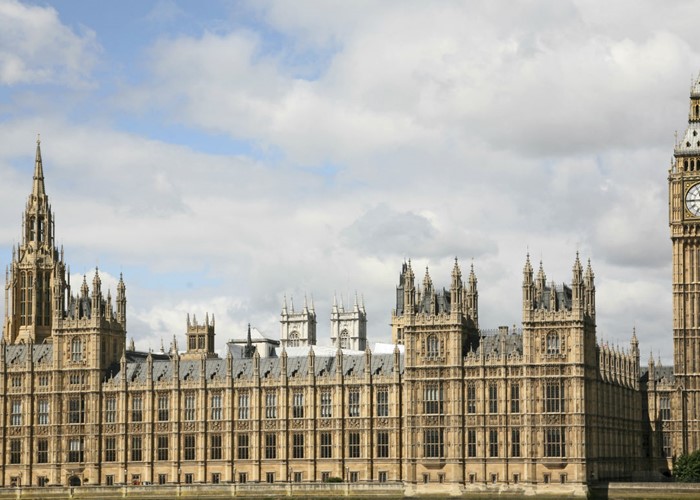Why it's getting grimmer up north

The old `north-south divide' argument has reared its head again recently after the government announced its latest round of cuts. Robert Powell takes a look at the figures...
The government has outlined the cuts that councils across the country will face in the coming years, with Labour-run northern councils among the biggest losers.
Unsurprisingly this has re-ignited the north-south divide debate, with many accusing the government of subjecting the poorest communities to the harshest cuts.
But is it really about to get grimmer up north? Let’s take a look at the figures.
Council cuts
The average cut to councils across the country is 4.4% of ‘revenue spending power’ in 2011-12 and the maximum possible cut is 8.9%. But this figure includes council tax spending (which is raised by the council independently) as well as government funding in the form of grants (worked out by formula as well as on a case-by-case basis) in addition to extra NHS funding set to come in next year.
Here’s a table showing some of the councils getting the largest and smallest cuts. I’ve also included the figures showing the cuts in central government funding and how much each council takes in tax.
|
Council |
Change in revenue spending power from 2010/2011 to 2011/2012 |
Government funding 2010 – 2011 (£m) |
Government funding 2011 – 2012 (£m) |
Council tax revenue (2010 – 2012) (£m) |
|
Knowsley |
-8.9% |
165.2 |
141.8 |
53.3 |
|
Liverpool |
-8.9% |
472 |
399.9 |
164 |
|
South Tyneside |
-8.9% |
131.3 |
111.5 |
57.5 |
|
Hackney |
-8.9% |
296.7 |
258 |
73.4 |
|
Tower Hamlets |
-8.9% |
301.3 |
264.1 |
74.7 |
|
St Helens |
-8.9% |
128.1 |
110 |
64.3 |
|
Dorset |
+0.25% |
88 |
88.7 |
201.4 |
|
Richmond-upon-Thames |
-0.61% |
53.3 |
52.2 |
114.4 |
|
West Sussex |
-0.65% |
185.2 |
181.5 |
378.7 |
|
Wokingham |
-0.63% |
36.6 |
35.8 |
81.3 |
|
Buckinghamshire |
-0.60% |
110.5 |
108.4 |
228.7 |
|
Windsor & Maidenhead |
-1.06% |
33.5 |
32.5 |
65.8 |
Source: Department for Communities and Local Government
As you can see, not all the councils taking the maximum cut are in the north as several areas in London and across the south are also facing 8.9% cuts.
It’s important to remember that the sizes of the councils also vary and so the grants and council tax takings will depend on the number of people in the designated area. But there’s still a definite trend visible in the figures – the councils taking the greatest cuts are those that receive the highest grants and raise the least in tax.
The government obviously views these areas as the best places to make big savings – whether that’s a fair solution for plugging the country’s financial black hole is a different argument.
But still, looking through the figures it’s hard to find a northern council getting anything less than a 3% cut in spending power. This suggests that these councils need government grants more due to a high public service bill and a lack of council tax income.
For more on how the area in which you live may impact on you read How your postcode costs you money.
Public services
So what does a high public service bill and low council tax income suggest about an area?
Take a look at this table showing the life expectancies and unemployment rates (jobseekers allowance claims) in the councils I looked at earlier.
|
Council |
Male life expectancy at age 65 (2007-9) |
Female life expectancy at age 65 (2007-9) |
Unemployment -November 2010 (population claiming JSA) |
|
Knowsley |
16.3 |
18.8 |
5.1% |
|
Liverpool |
15.7 |
18.4 |
7% |
|
South Tyneside |
16.8 |
19.4 |
5.4% |
|
Hackney |
18.8 |
22 |
6.9% |
|
Tower Hamlets |
17.1 |
19.2 |
6.4% |
|
St Helens |
16.4 |
19 |
4.8% |
|
Dorset |
19.6 |
22.3 |
1.7% |
|
Richmond-upon-Thames |
19.4 |
22.9 |
1.5% |
|
West Sussex |
18.6 |
21.1 |
2.3% |
|
Wokingham |
20.0 |
21.8 |
1.4% |
|
Buckinghamshire |
19.4 |
21.7 |
1.8% |
|
Windsor & Maidenhead |
18.2 |
20.9 |
1.7% |
Source: Office for National Statistics (NB when unemployment data was unavailable for whole councils I averaged out a figure from the smaller local areas.)
You can see clearly that on paper life expectancies are lower and unemployment rates higher in the mainly northern councils that are facing the largest funding cuts.
This high amount of ill-health and unemployment obviously contributes to the large public service bill and lack of independent funding that many northern councils have. It’s a vicious circle that it’s this large funding requirement that is causing the neediest of councils to suffer the harshest cuts.
It may be controversial to say so, but at least on paper – a very clear north-south divide is visible within England.
But why?
The human divide
Reasons given for the north-south divide range from the plausible to the absurd – but I have never found one that I believe fully explains this apparent regional gap. And what’s more, I don’t think many other people have either.
This is why so many people will resort to crude stereotyping to explain facts that they can’t get their heads around.
Northerners become fat useless layabouts to those in the south, whilst in the north, southerners are the fat-cat suits out to rob us of everything we’ve got.
This is the real and far more sinister divide; not between public services or job markets, but between people.
This divide was wrenched open even further recently by Buckinghamshire Council leader David Shakespeare when he suggested that unemployed northerners should replace immigrants and pick fruit in the south.
It’s this type of brazen snobbery that will force the north-south divide in this country wider than the cuts ever could.
Needless to say, if the government can’t keep a lid on simple stereotypists like David Shakespeare when the real pain of the cuts starts to hit, the grim north will deliver the coalition a grim vote.
For more on the government’s spending reforms read Cut their benefits and force them to work.
What do you think?
Is there a north-south divide? Are the government cuts about to make it a lot grimmer up north?
Let us know your views in the comment box below.
More: Spending cuts: The biggest losers Why Britain is in deep doo-doo
Most Recent
Comments
-
Chancer9, I think that you will find that the structural deficit was built up well before the bail out of the banks started. Even then it was the intervention of Brown which added Lloyds to the failed bank list. By the public sector I do not mean capital investment I mean non jobs and departments created to process massive regulation - little of which had anything with improving economic output and a lot to 'developing' Labour's northern power base. Then of course there is the public sector pension debacle which gives longevity to the problem and is one of the main reasons for needing to deal with the problem now. I? agree completely with ???Electricblue?.?? ? ??P?e?r?h?a?p?s? ??S?o?u?l?2?m?a?t?e?s? ?w?a?s?n?'?t? ?a?r?o?u?n?d? ?w?h?e?n? ?t?h?e? ??I?M?F? ?c?a?m?e? ?i?n? ?a?n?d? ?t?h?a?t? ?w?a?s? ?t?h?e? ?l?a?s?t? ?t?i?m?e? ?t?h????????e? ??T?o?r?i?e?s? ?h?a?d? ?t?o? ?c?l?e?a?r? ?u?p? ?t?h?e? ?????La?b?o?u?r? ?m?e?s?s?.? ????????
REPORT This comment has been reported. -
Go out Robert with your video camera and compare Tower Hamlets with Richmond on Thames; poor housing, poverty, poor education and transport in the former and they take the bigger cut. Take a video, show us what the housing stock is like!
REPORT This comment has been reported. -
Robert good piece highlighting the difficulty in judging where to cut and who is worst affected. This is going to be a running theme for duration of the next parliament cos this surely won't be the last cuts. Got to take issue with AaAstra100 though on the source of our problems. Yes there has been unsustainable investment in the public sector. All that money given to certain banks, who yes are in the public sector, has caused the country's national debt to go haywire. Who was it that almost bankrupted the country, the banks - not local councils, not the labour party, not the health service. Some of the debt could be addressed - banks give us back our money. No bonuses while in public ownership until all bailout monies have been repaid with interest. Thinking of some more public investment what about the Olympics. Who benefits from the construction jobs, games jobs and legacy, the south east. Then again why would the north complain when money from the NATIONAL lottery is diverted to give the south east a massive fiscal stimulus. I think the north south divide could be easily remedied by moving the parliament to somewhere north of Birmingham or to say Manchester. This would bring a much needed economic lift and the jobs attached.
REPORT This comment has been reported.
Do you want to comment on this article? You need to be signed in for this feature









07 January 2011